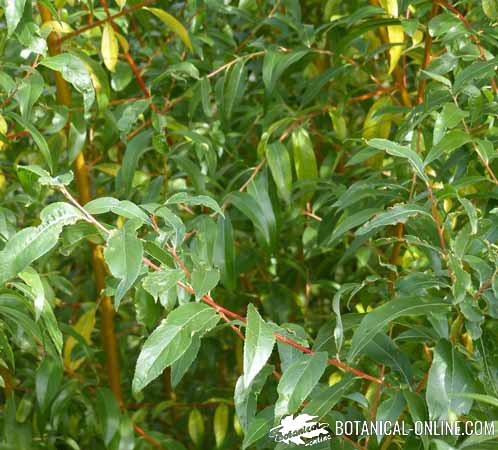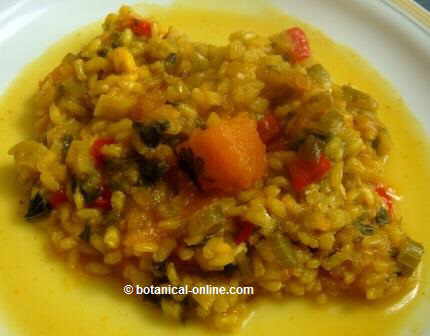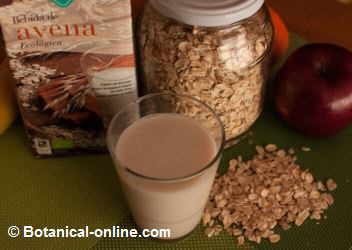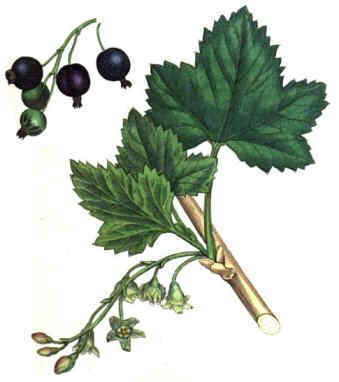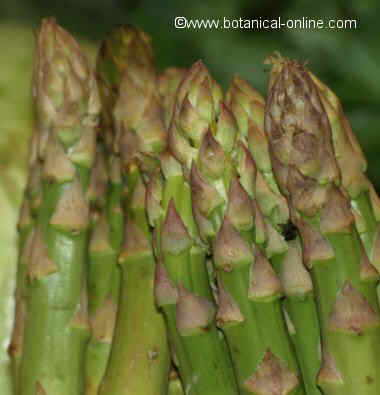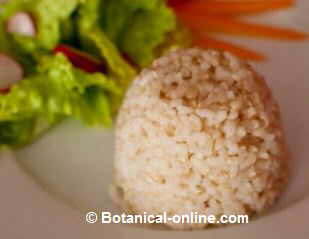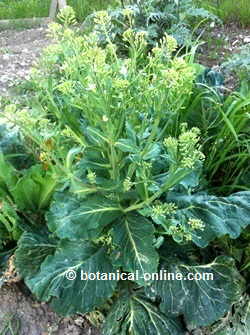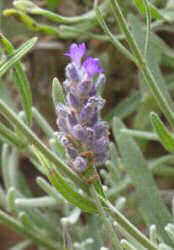Contents
- 1 Cocoa chocolate versus carob chocolate
- 1.1 CHOCOLATE AND CAROB COMPARISON
- 1.2 Differences between cocoa and carob chocolate
- 1.3 Main characteristics of carob flour
- 1.4 Main characteristics of cocoa powder
- 1.5 What are the differences between cocoa chocolate and carob chocolate?
- 1.6 Cocoa is very fatty and carob contains virtually no fats
- 1.7 Carob flour has a lot of sugar
- 1.8 Combination of cocoa and carob
- 1.9 Fiber content of cocoa and carob
- 1.10 Can people with diabetes eat carob? And cocoa?
- 1.11 Which of the two has more calories?
- 1.12 Which has more proteins?
- 1.13 Mineral differences between carob and cocoa
- 1.14 Antioxidants of cocoa and carob
- 1.15 Stimulating effects of cocoa and carob
- 1.16 Cocoa oxalates: Has carob oxalates?
- 1.17 Nutritional composition chart
- 1.18 Other differences between carob and cocoa
- 1.19 Conclusion: Which is better, carob or cocoa?
Cocoa chocolate versus carob chocolate
CHOCOLATE AND CAROB COMPARISON
Differences between cocoa and carob chocolate
In recent years the consumption of carob flour has been extended as a substitute for cocoa. Among the main advantages of this Mediterranean food is that it does not have the exciting effects that cocoa has.
But, besides being a substitute for cocoa:
What properties does carob have?
What is it and where does it come from?
Which is better to eat chocolate or carob?
Main characteristics of carob flour
Carob flour is obtained from the grinding of carob tree (Ceratonia siliqua), which are the fruits of a Mediterranean tree. It has been used since ancient times for its properties to improve intestinal health, especially in cases of infantile diarrhea.
Main characteristics of cocoa powder
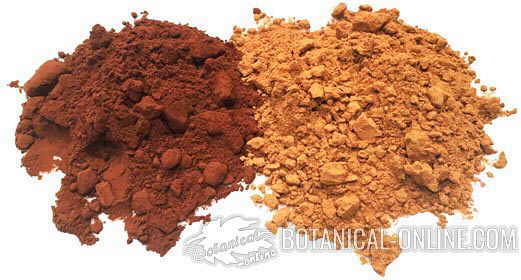 Real photo of cocoa powder (left) and carob flour (right). It is appreciated that its coloration is very different.
Real photo of cocoa powder (left) and carob flour (right). It is appreciated that its coloration is very different.Cocoa powder is obtained from the fruits of cocoa tree (Theobroma cacao), a very important tropical tree in Mesoamerican culture. It is summarized as having energetic, stimulating, antioxidant properties and is pleasurable to eat. Pure cocoa provides many fats, low sugar, and is rich in magnesium and flavonoids.
What are the differences between cocoa chocolate and carob chocolate?
The composition of these two powders is very different. The most notable difference between these products is their macronutrient content, the type of fiber they contain, the amount of minerals and some vitamins.
Pure cocoa powder contains up to 20% fat and 2% sugars, while carob contains only 0.7% fat and 45% sugars, making it sweeter and easier to digest.
If we analyze these foods more in detail, we will see that both foods have healthy properties, but by their characteristics, they have different indications:
Cocoa is very fatty and carob contains virtually no fats
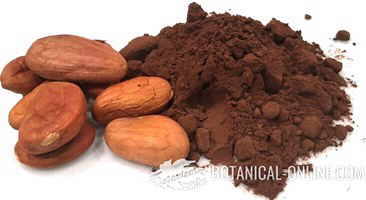 Cocoa is rich in fats and contains lots of magnesium, potassium and stimulating properties
Cocoa is rich in fats and contains lots of magnesium, potassium and stimulating properties
Cocoa powder contains between 13 and 20% fat (depending on the trademark), while carob flour contains virtually no fats (less than 1 g of fat per 100 g of product).
This makes cocoa more palatable and unctuous, but on the other hand, carob is easier to digest because of its low fat content. In fact, carob is a widely used dietary remedy for diarrhea because, in addition to its easy digestion, it is astringent and helps to shorten the time of diarrhea.
On the other hand, carob is easy to mix with cold water without forming lumps, something that is impossible with cocoa powder, because fat can not dissolve (immiscible) in cold water.
Carob flour has a lot of sugar
Carob contains more sugar, which makes up 45-50% of its composition. This property is the main reason why carob has become a substitute for chocolate. It is also an energy food, ideal for children, athletes, and as an energy source.
It should be mentioned that carob sugar is a natural sugar, which can not be compared to added sugar or artificial sugar. As we will see in the next point, carob has a lot of fiber, which greatly slows the absorption of these sugars.
Combination of cocoa and carob
Pure cocoa has very little sugar, less than 2 grams per 100g. For this reason, it is always sweetened with sugar.
However, a perfect option to sweeten the cocoa with natural sugars is to combine cocoa with carob (2 tablespoons of carob per 1 of cocoa).
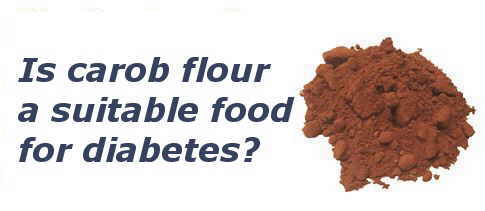
Carob has a lot of sugar per 100g and many people doubt if it is contraindicated for diabetics
* Related information: Carob for diabetes
Fiber content of cocoa and carob
Carob flour has more fiber (40g / 100g) than cocoa powder (30g / 100g), although both are foods rich in fiber.
In this section, the difference between fiber is qualitative, because carob contains a more fermentable type of fiber than cocoa powder, which makes it more suitable to improve the intestinal flora.
In addition, this fiber helps to decrease the glycemic index of this fruit, which allows it to be better tolerated for the body, especially for diabetics.
Can people with diabetes eat carob? And cocoa?
Diabetics can eat carob and pure cocoa, as long as both options are not sugary.
The sugar content of carob is not a contraindication for diabetics. It has been shown in scientific studies that carob flour has a low glycemic index, that is to say, its sugars are slowly assimilated without producing hyperglycemia due to its high fiber content.
Therefore, it can be consumed by diabetics, though, like all foods, in moderation, and controlling the diet for diabetes not to exceed in the amount of hydrates ingested. Two teaspoons of carob flour would be a correct serving.
Which of the two has more calories?
In principle, according to the tables of composition, both products have a similar energy content, of about 200 calories (kcal) per 100g. Therefore, a spoonful of cocoa or carob (20g) contains about 40 kcal.
However, there are different brands of cocoa powder, with a fat percentage that ranges between 10-20%. The higher the fat content of cocoa, the more energetic it will be. However, consumed in moderation, both foods are suitable in diets to lose weight.
Which has more proteins?
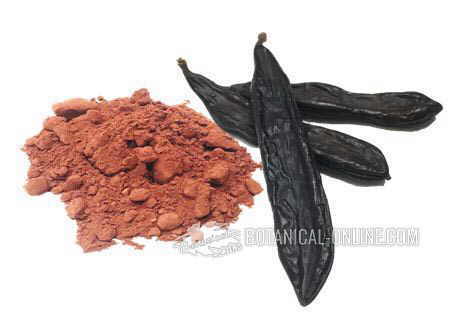 Carob is low in fat and very rich in sugars and fiber, it also contains lots of calcium
Carob is low in fat and very rich in sugars and fiber, it also contains lots of calcium
Cocoa powder is high in protein (18%), while carob has a fairly low protein content (5%). However, in the food doses consumed, neither food supposes an important contribution of proteins.
Mineral differences between carob and cocoa
The most important differences with respect to the micronutrient composition of these two foods are:
- Cocoa has 8 times more magnesium than carob. Very few foods can be compared to the magnesium content of cocoa, which is one of the richest foods in this mineral. Magnesium is especially interesting for athletes and people with a lot of stress, although the benefits of this mineral are also due to its role for bone health.
- Cocoa contains 3 times more potassium (2,500mg / 100g) than carob (800mg / 100g). Potassium is a diuretic mineral that stimulates the kidneys to produce urine. Although it is a very high difference, in fact, potassium is never a mineral that should worry us if the diet is abundant in vegetables, fruits and herbs. However, carob is the best option for those who must carry a diet with little potassium.
- Carob contains 3 times more calcium (350 mg / 100g) than cocoa (111mg / 100g). In fact, many nutritionists point out that carob could be an excellent food for bones because of its high calcium content and low in oxalates.

The main differences in composition between pure cocoa powder and carob flour
Antioxidants of cocoa and carob
Antioxidants are substances widely distributed in the plant kingdom. One of the best known is vitamin C, but there are many more phytochemicals with these properties.
Cocoa is one of the richest foods in flavonoids and antioxidant principles, and its consumption is related to the improvement of inflammation, sports performance, etc.
It is very difficult to compare the antioxidant properties of cocoa with those of carob, because there are numerous studies (hundreds) that demonstrate the antioxidant properties of cocoa, and very few that thoroughly treat these properties of carob, due to widespread ignorance on this fruit, and the popularity of cacao around the world.
However, chemical analyzes show that carob also contains antioxidant compounds and, in studies, shows that it helps to lower cholesterol. More studies on carob are needed to compare both products, but both are antioxidant and beneficial.
Stimulating effects of cocoa and carob
Cocoa is a very stimulating food, and has been used in numerous rituals and cultures for this purpose, since ancient times. Its exciting principles are caffeine and theobromine, two alkaloids.
Carob lacks these stimulating effects and is presented as a more appropriate option in those cases where it is not advisable to consume stimulant foods, such as hyperactivity, anxiety, or people with insomnia.
Cocoa oxalates: Has carob oxalates?
Pure cocoa is very rich in oxalates, components that prevent the absorption of calcium and iron and that, in addition, consumed in excess, can produce stones in the kidneys in people who have that predisposition.
Related information: Oxalates content of pure cocoa
Nutritional composition chart
The following is a comparative table between the nutritional composition of cocoa and carob:
| Nutritional comparison between cocoa and carob per 100 gr. | ||
| Pure cocoa powder | Carob flour | |
| Water | 3 g | 3,58 g |
| Calories | 220 Kcal | 222 Kcal |
| Fat | 13 – 20 g | 0,65 g |
| Protein | 18,10 g | 4,62 g |
| Carbohydrates | 58,30 g | 88,88 g |
| From whom, sugar | 1,76 g | 49 g |
| Fiber | 29,8 g | 39,8 g |
| Potassium | 2.509 mg | 827 mg |
| Phosphorus | 728 mg | 79 mg |
| Iron | 15,32 mg | 2,94 mg |
| Sodium | 14 mg | 35 mg |
| Magnesium | 476 mg | 54 mg |
| Calcium | 111 mg | 348 mg |
| Zinc | 6,37 mg | 0,92 mg |
| Vitamin C | 0 mg | 0,4 mg |
| Vitamin A | 0 UI | 14 UI |
| Vitamin B1 (Thiamin) | 0,110 mg | 0,05 mg |
| Vitamin B2 (Riboflavin) | 0,46 mg | 0,46 mg |
| Vitamin B3 (Niacin) | 2,4 mg | 2 mg |
| Vitamin B6 (Pyridoxine) | 0,095 mg | 0,336 mg |
| Vitamin E | 0,118 mg | 0,63 mg |
| Vitamin B9 (Folic acid) | 32 mcg | 29 mcg |
![]() : indicates high content.
: indicates high content.
Other differences between carob and cocoa
There are other nutrients that are more abundant in one food than in the other, although in a healthy diet, these are not especially noticeable
- Carob contains almost 4 times more pyridoxine than cocoa. Carob has 0,336mg of pyridoxine (vitamin B6) per 100g. This vitamin is interesting to boost defenses, although we should eat more foods rich in B6.
- Cocoa has 9 times more phosphorus than carob, being a very rich food in this mineral. Phosphorus is necessary for bone health and for brain function.
- Cocoa has twice the thiamine than carob, although this vitamin is found in almost all foods, so it is not usually deficient. Thiamin is important for the proper functioning of the nervous system.
- Cocoa has 7 times more zinc than carob. Zinc is a very important mineral for fertility and to increase testosterone levels. Certainly, carob contains very little zinc, compared to cocoa, which is one of the richest foods.
Conclusion: Which is better, carob or cocoa?
As for the nutritional content, both foods provide interesting nutrients to the diet. Therefore, both options are really nutritious and can be beneficial in our diet. Among the main differences, we can highlight:
- Carob is very advisable in cases of diarrhea or intestinal discomfort, as it is easy to digest, low in fat and has a type of fiber very advisable to treat these ailments. Traditional use confirms it as a good food for the intestine.
- Cocoa powder is presented as a food more ideal for students in the period of exams, or people who want a high work or sports performance, as it has a high content of fats, magnesium, antioxidants, and components with stimulant properties. It has also been shown to improve sports performance.
- For hyperactive children, carob is a better choice than cocoa because it lacks stimulant effects.
- For osteoporosis, carob is a very rich choice of calcium, can be added to meals, or used as a natural sweetener usually.
- If there are kidney problems, poor absorption of fats, Crohn’s or short bowel syndrome, it is preferable to avoid foods with oxalates and to consume foods containing less. In these patients, carob is a very good option.
- To lose weight, both have properties advisable, so you can go combining, or use the one you like. However, the stimulating effect of cocoa should be taken into account, which may be inadvisable in people who are anxious about food. Also, do not take either of the two options with sugar.
And from all this information comes out a question… why not combine both superfoods? Indeed, carob is the best choice for sweetening cacao (2 teaspoons of carob per 1 cacao). You could even add some cinnamon or other spices to play with these flavors. Creativity in the kitchen!
![]() More recipes and information on cocoa and chocolate.
More recipes and information on cocoa and chocolate.

